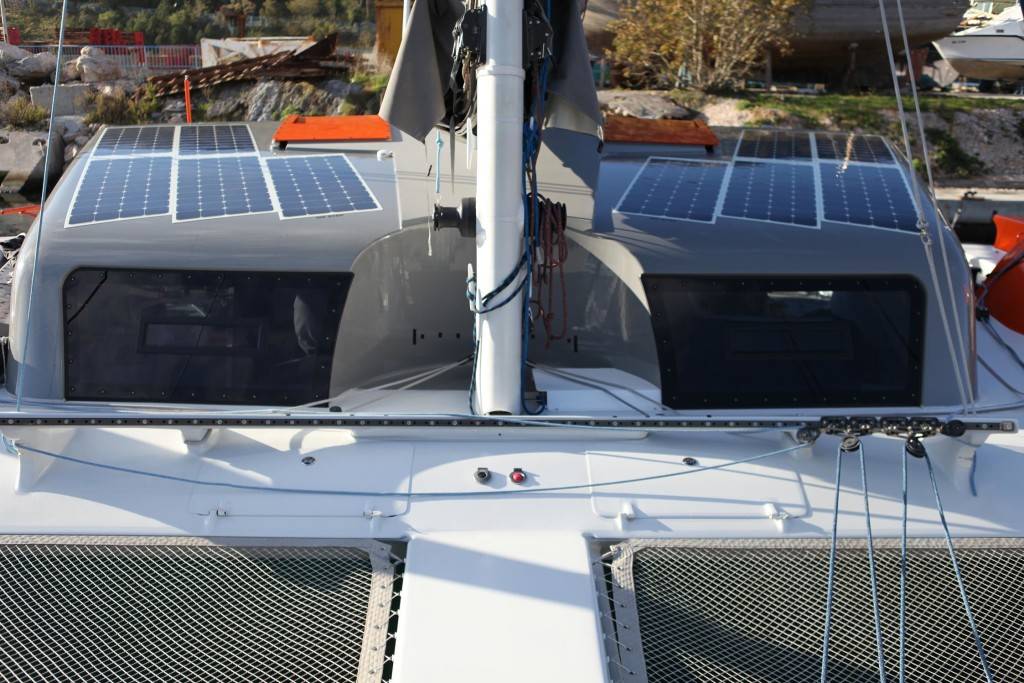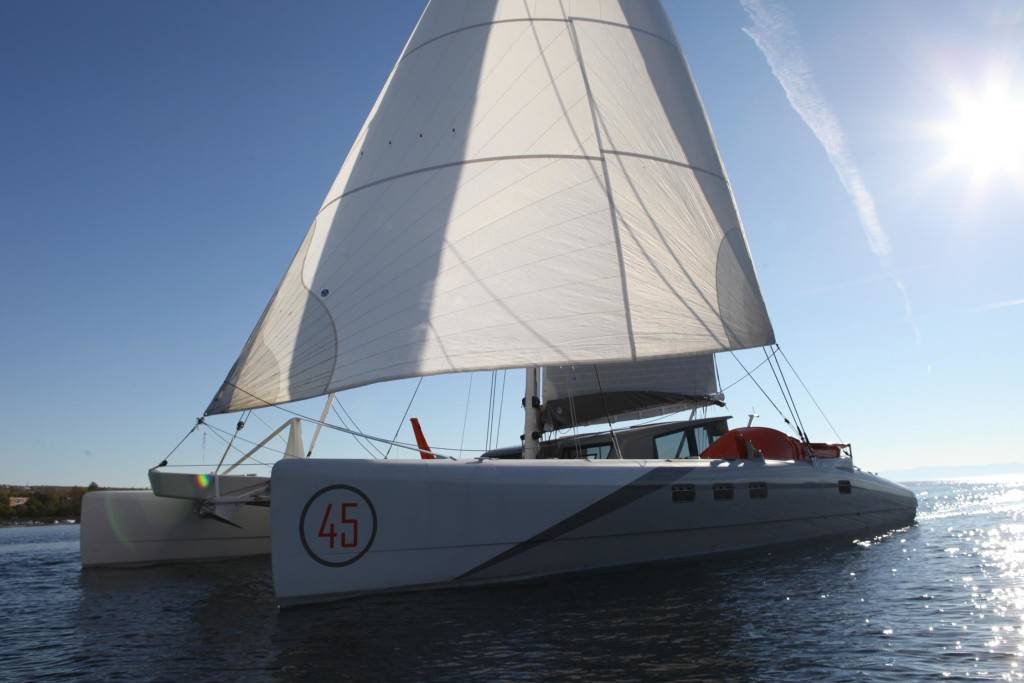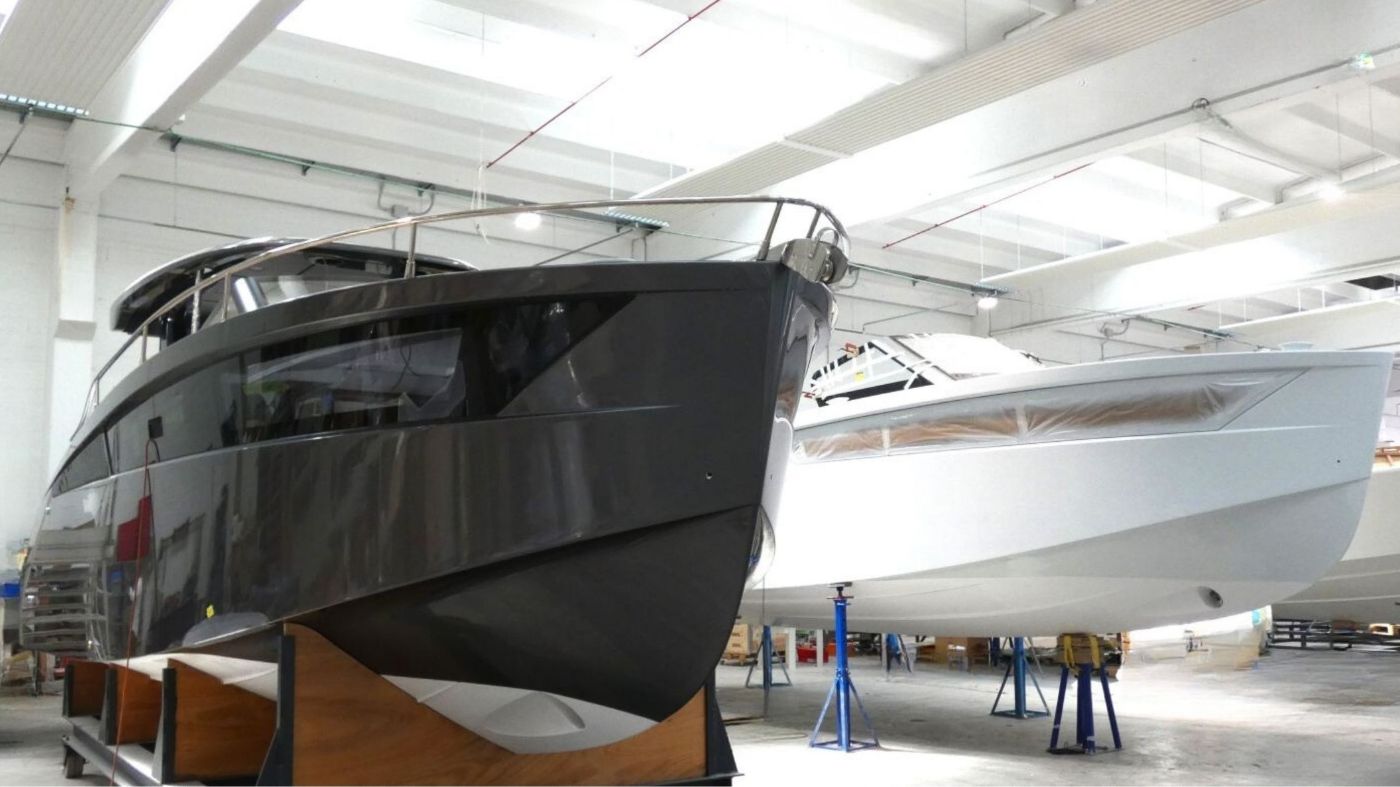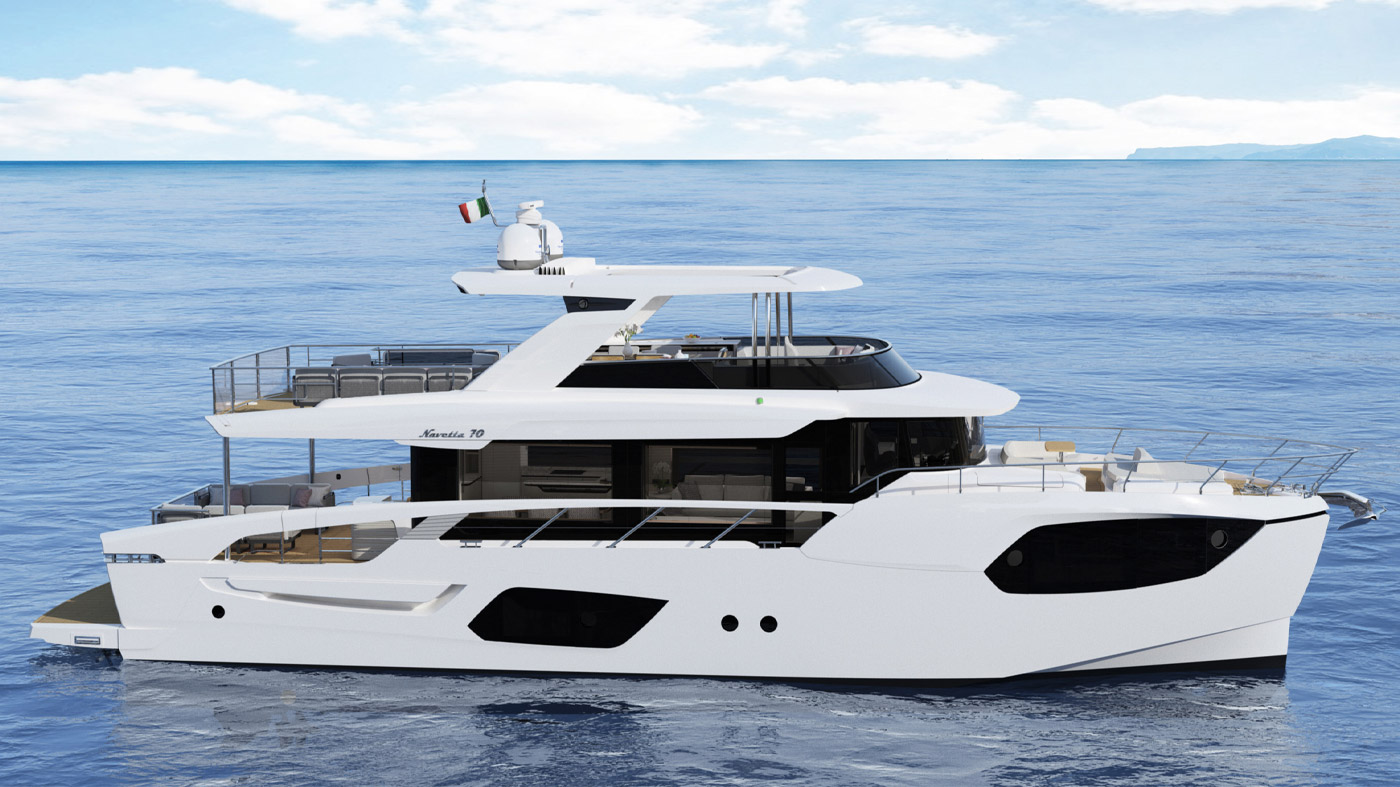Metti insieme un armatore ammalato di velocità, ma che vuole andare in vacanza in crociera con la famiglia; un catamarano che è una pura macchina per correre sui campi di regata (dove in Nuova Zelanda, da dove viene, ha vinto tutto); e uno studio di progettazione, H3O Yacht Design, a cui viene affidato l’arduo compito di far quadrare il cerchio, di dare soddisfazione ad una richiesta che sembrava impossibile.
Ecco che ottieni una delle barche più interessanti che abbiamo visto nelle ultime stagioni.
[wbl_slider id=”8489″]
Si parte da un progetto di un grande specialista del settore, Brett Bakewell – White (con alle spalle un lungo passato anche in Coppa America) e da una barca realizzata da uno dei cantieri specializzati in questo genere di imbarcazioni, la Multihull Solutions. La sfida progettuale di H3O è stata quella di convertire X – Factor in un mezzo adatto anche alla crociera. La barca è quindi arrivata via cargo dal Pacifico e, al termine di quasi due anni di studi, modifiche e di messa a punto, è nato un nuovo X-Factor.
La modifica principale riguarda la comparsa di una grande sovrastruttura lì dove prima c’era solo rete tra i due scafi. E’ così nato un grande ambiente coperto dove trovano posto carteggio, cucina e un’ampia zona living con tavolo da pranzo. La zona di camminamento in rete è ora limitata solo all’area esterna del pozzetto, a ridosso della traversa di poppa.
[wbl_slider id=”8492″]
Per realizzare queste modifiche senza che l’impostazione del progetto fosse compromessa, per evitare quindi un eccessivo aumento dei pesi, il team di H3O ha previsto un massiccio lavoro di alleggerimento di tutte le strutture e delle pannellature interne, utilizzando un sofisticato e leggerissimo sandwich con pelle esterna in carbonio. Profondamente rivisti anche gli interni dei due scafi laterali che ora sono perfettamente simmetrici e hanno entrambi due cabine e un bagno. Per rendere più facili le manovre a vela è stata rivista anche la posizione e l’inclinazione delle derive laterali; ora anche in crociera e senza bisogno di un equipaggio professionista, X-Factor è decisamente a suo agio in virata.
[wbl_slider id=”8495″]
Anche il piano velico ha subito una massiccia modifica (l’albero prima puntava sulla traversa centrale) ma rimane potentissimo, con 107 mq di superficie velica della randa, 47 di fiocco, 98 di Code Zero e 210 di gennaker. Tutte le vele sono North Sails, l’albero è della Hall.
Tra le caratteristiche che rendono assolutamente unico X-Factor c’è la sorprendente capacità di essere autonomo in 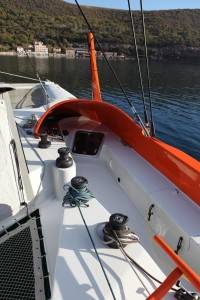
X Factor – La scheda tecnica
Progetto: H3O Yacht Design – Brett Bakewell White Lunghezza f.t. m 16,50 Baglio massimo m 10,45Dislocamento a pieno carico kg 9.100
Dislocamento a vuoto kg 7.500
Pescaggio minimo cm 41
Pescaggio con le derive abbassate m 2,40
Sup. velica randa mq 107
Sup. velica fiocco mq 47
Sup. velica code Zero mq 98
Sup. velica gennaker mq 210
Altezza massima dall’acqua m 23,23
